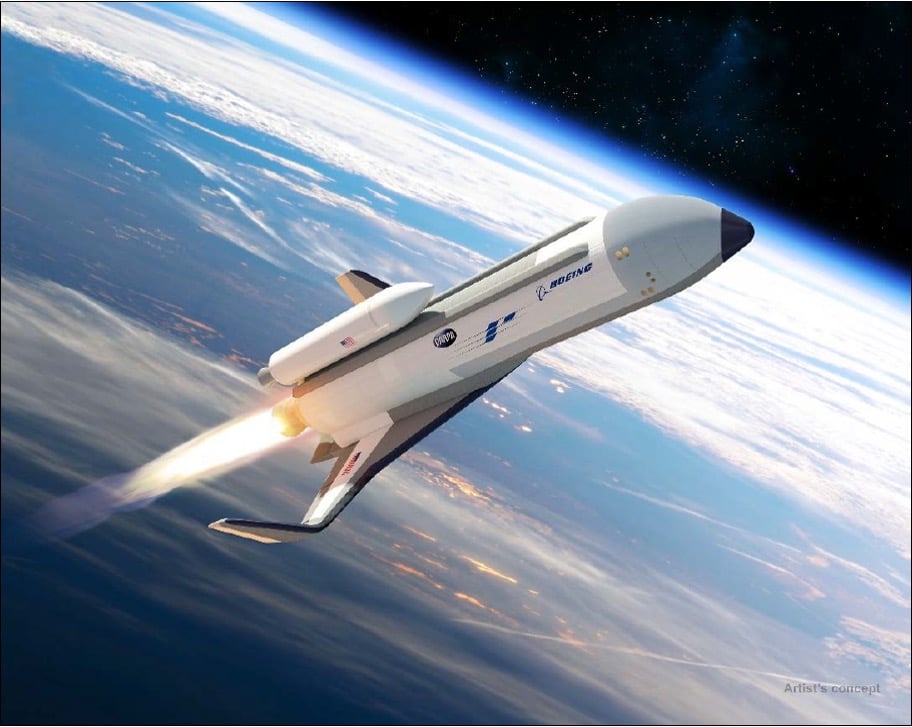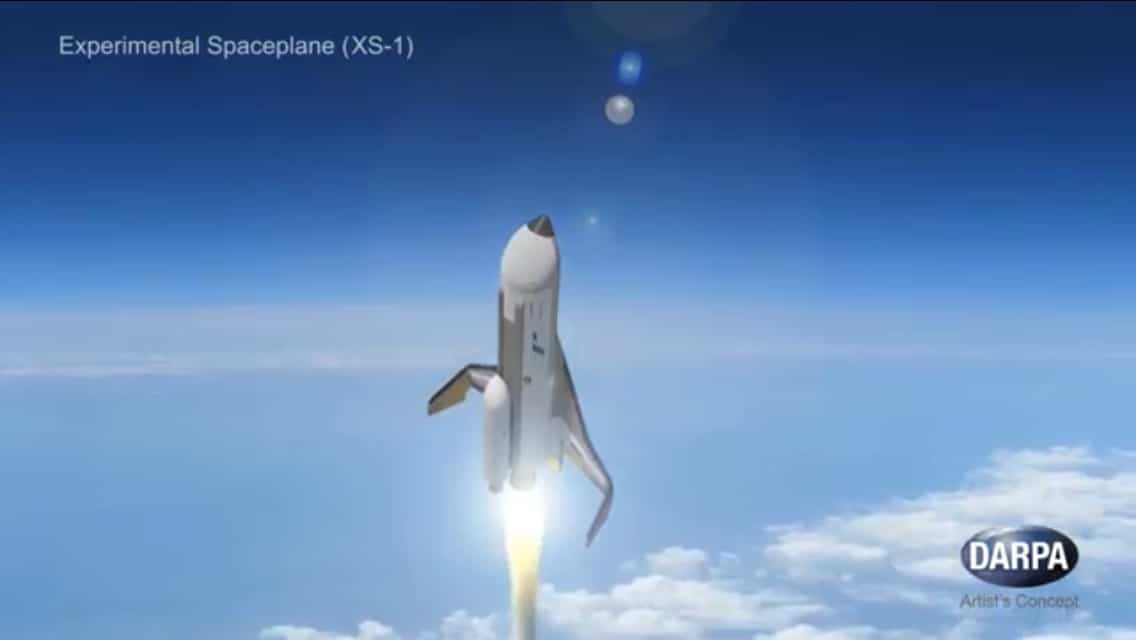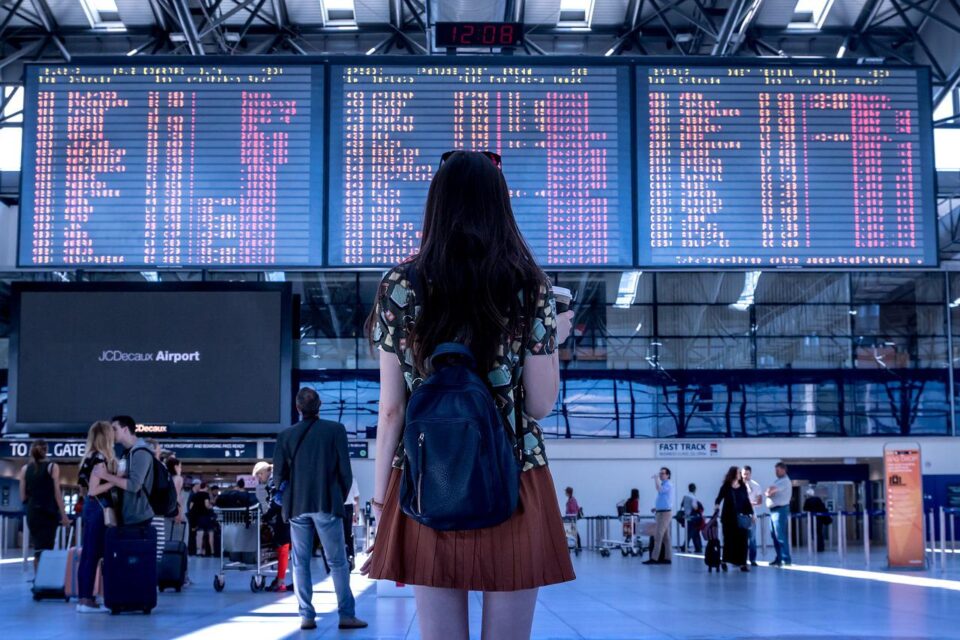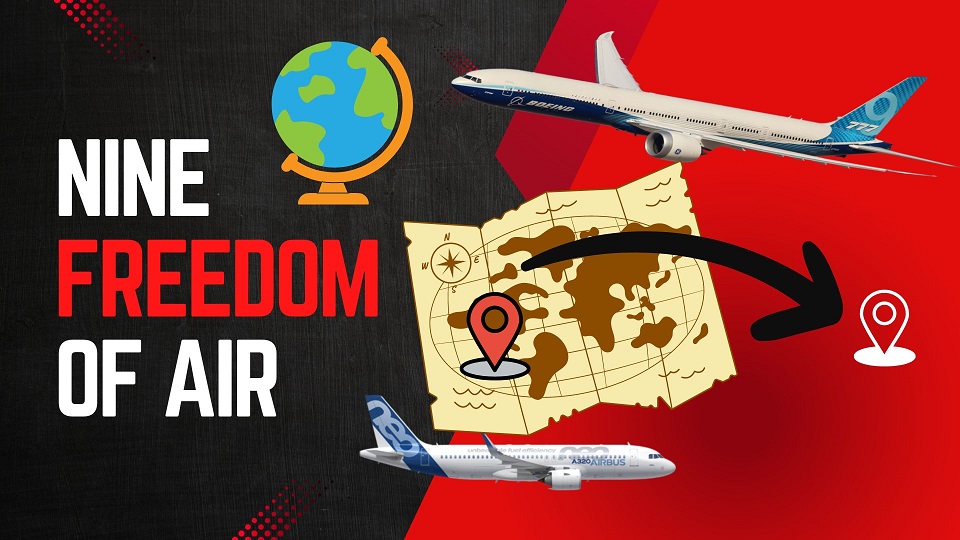Aviation
DARPA has selected The Boeing Company to build its Experimental Spaceplane (XS-1)

DARPA has selected The Boeing Company to complete advanced design work for the Agency’s Experimental Spaceplane (XS-1) program, which aims to build and fly the first of an entirely new class of hypersonic aircraft that would bolster national security by providing short-notice, low-cost access to space. The program aims to achieve a capability well out of reach today—launches to low Earth orbit in days, as compared to the months or years of preparation currently needed to get a single satellite on orbit. Success will depend upon significant advances in both technical capabilities and ground operations, but would revolutionize the Nation’s ability to recover from a catastrophic loss of military or commercial satellites, upon which the Nation today is critically dependent.
“The XS-1 would be neither a traditional airplane nor a conventional launch vehicle but rather a combination of the two, with the goal of lowering launch costs by a factor of ten and replacing today’s frustratingly long wait time with launch on demand,” said Jess Sponable, DARPA program manager. “We’re very pleased with Boeing’s progress on the XS-1 through Phase 1 of the program and look forward to continuing our close collaboration in this newly funded progression to Phases 2 and 3—fabrication and flight.”
The XS-1 program envisions a fully reusable unmanned vehicle, roughly the size of a business jet, which would take off vertically like a rocket and fly to hypersonic speeds. The vehicle would be launched with no external boosters, powered solely by self-contained cryogenic propellants.


Upon reaching a high suborbital altitude, the booster would release an expendable upper stage able to deploy a 3,000-pound satellite to polar orbit. The reusable first stage would then bank and return to Earth, landing horizontally like an aircraft, and be prepared for the next flight, potentially within hours.
In its pursuit of aircraft-like operability, reliability, and cost-efficiency, DARPA and Boeing are planning to conduct a flight test demonstration of XS-1 technology, flying 10 times in 10 days, with an additional final flight carrying the upper-stage payload delivery system. If successful, the program could help enable a commercial service in the future that could operate with recurring costs of as little as $5 million or less per launch, including the cost of an expendable upper stage, assuming a recurring flight rate of at least ten flights per year—a small fraction of the cost of launch systems the U.S. military currently uses for similarly sized payloads. (Note that goal is for actual cost, not commercial price, which would be determined in part by market forces.)
To achieve these goals, XS-1 designers plan to take advantage of technologies and support systems that have enhanced the reliability and fast turnaround of military aircraft. For example, easily accessible subsystem components configured as line replaceable units would be used wherever practical to enable quick maintenance and repairs.
The XS-1 Phase 2/3 design also intends to increase efficiencies by integrating numerous state-of-the-art technologies, including some previously developed by DARPA, NASA, and the U.S. Air Force. For example, the XS-1 technology demonstrator’s propulsion system is an Aerojet Rocketdyne AR-22 engine, a version of the legacy Space Shuttle main engine (SSME).
XS-1 Phase 2 includes design, construction, and testing of the technology demonstration vehicle through 2019. It calls for initially firing the vehicle’s engine on the ground 10 times in 10 days to demonstrate propulsion readiness for flight tests.
Phase 3 objectives include 12 to 15 flight tests, currently scheduled for 2020. After multiple shakedown flights to reduce risk, the XS-1 would aim to fly 10 times over 10 consecutive days, at first without payloads and at speeds as fast as Mach 5. Subsequent flights are planned to fly as fast as Mach 10, and deliver a demonstration payload between 900 pounds and 3,000 pounds into low Earth orbit.
Another goal of the program is to encourage the broader commercial launch sector to adopt useful XS-1 approaches, processes, and technologies that facilitate launch on demand and rapid turnaround—important military and commercial needs for the 21st century. Toward that goal, DARPA intends to release selected data from its Phase 2/3 tests and will provide to all interested commercial entities the relevant specs for potential payloads.
“We’re delighted to see this truly futuristic capability coming closer to reality,” said Brad Tousley, director of DARPA’s Tactical Technology Office (TTO), which oversees XS-1. “Demonstration of aircraft-like, on-demand, and routine access to space is important for meeting critical Defense Department needs and could help open the door to a range of next-generation commercial opportunities.”

Airlines
US DOT says Airlines must now pay automatic refunds for cancelled flights

The U.S. Department of Transportation (DOT) has released a final regulation requiring airlines to quickly reimburse passengers with automatic cash refunds when owed, according to a statement made by the Biden-Harris Administration.
Under the new regulation, passengers will find it easier to get refunds when airlines dramatically alter or cancel flights, cause severe delays for checked baggage, or don’t supply the additional services they paid for.
According to a statement from the Biden-Harris Administration, the U.S. Department of Transportation (DOT) has published a final rule mandating airlines to promptly compensate customers with automatic cash refunds when they are eligible. The new rule would make it simpler for customers to receive refunds from airlines in cases when they drastically change or cancel flights, cause significant delays for checked luggage, or fail to provide the extra services they charged for.
Under the latest rule from the USDOT, passengers are guaranteed refunds in several scenarios:
- Canceled or Significantly Changed Flights: Passengers are entitled to refunds if their flight is canceled or significantly altered, including changes in departure or arrival times exceeding 3 hours domestically or 6 hours internationally, departures or arrivals from different airports, increased connections, downgrades in service class, or changes less accommodating to passengers with disabilities.
- Delayed Baggage Return: Passengers filing mishandled baggage reports can claim a refund for checked bag fees if their luggage is not returned within specific timeframes after flight arrival.
- Unprovided Extra Services: If airlines fail to deliver paid extra services like Wi-Fi, seat selection, or inflight entertainment, passengers can request refunds for those fees.
The final rule streamlines the refund process, ensuring it is:
- Automatic: Refunds are issued automatically without requiring passengers to request them.
- Prompt: Airlines must refund credit card purchases within seven business days and other payment methods within 20 calendar days.
- In Original Form of Payment: Refunds are provided in the original payment method used for purchase.
- Full Amount: Passengers receive full refunds minus the value of any portion of transportation already used, including government and airline fees.
Suggest banning family seating junk fees and ensuring that parents can travel with their kids at no additional cost. No airline promised to ensure fee-free family seating prior to efforts from President Biden and Secretary Buttigieg last year. Family seating is now guaranteed free of charge on four airlines, and the Department is working on a plan to eliminate family seating junk fees.
Propose to make passenger compensation and amenities mandatory so that travelers are taken care of when airlines cause flight delays or cancellations.
Airlines
The Nine Freedoms of the Air – Jetline Marvel

Most of us travel from one city to another city via road we need to get permission to that specific city if it is in another country like a visa or Road access permission to use its property for revenue purposes to carry passengers and Cargo. Similarly, In the airline Industry, it is also important that the Company have permission to fly and access that country whether it’s for stoppage flying above them, or Operating the passengers within that country This is called Freedom of the Air.
Some countries together they agree with certain conditions to access their Aerospace for to access for the airline to travel above their nation. If the bilateral is done for Their own countries’ airlines or other countries’ airlines. In this chapter, we understand how this thing is carried out. What all the condition has to look into that.
The Freedoms of the Air are international commercial aviation agreements (traffic rights) that grant a country’s airline(s) the privilege to enter and land in another country’s airspace. They were formulated in 1944 at an international gathering held in Chicago (known as the Chicago Convention) to establish uniformity in world air commerce. There are generally considered to be nine freedoms of the air.
Most nations of the world exchange first and second freedoms through the International Air Services Transit Agreement. The other freedoms,chase freedom airline miles when available, are usually established between countries in bilateral or multilateral air services agreements. The third and fourth freedoms are always granted together. The eighth and ninth freedoms (cabotage) have been exchanged only in limited instances
First Freedom:
The basic permission granted to an airline from one country (A) to fly through the airspace of another country (B)
Second Freedom:
The permission for a commercial airplane from country (A) to land and refuel (often called a technical stop) in another country (B).
Third Freedom :
The privilege for an airline to transport paying (Revenue) passengers from its home country (A) to another country (B).
Fourth Freedom
The rights for an airline to transport paying (Revenue )passengers from another country (B) to the airline’s home country (A).
Fifth Freedom
Fifth Freedom (also known as beyond rights): The rights for an airline to transport passengers from its home country (A) to a destination (B), then pick up and carry passengers to other international destinations (C).
Sixth Freedom:
Sixth Freedom (Combination of Third & Fourth Freedoms) The right for an airline to carry passengers or cargo between two foreign countries (B and C), provided the aircraft touches down in the airline’s home country (A).
Seventh Freedom:
The authorization for an airline to operate flights that start in a foreign country (B), skip its home country (A), and transport passengers to another international destination (C).
Eighth Freedom Air
The rights for an airline to transport passengers from one location within a country’s territory (B) to another point within the same country on a flight originating in the airline’s home country (A). This right is commonly referred to as cabotage and is notably scarce outside of Europe.
Ninth Freedom Air
The entitlement for an airline from a specific country (A) to begin a flight in a foreign country (B) and transport passengers from one location to another within that foreign country. This concept, also referred to as stand-alone cabotage, distinguishes itself from the traditional aviation definition of cabotage by not directly involving the airline’s home country.
Aviation
Air India’s B747 Makes Its Final Journey, Waving Farewell to Fans

In a poignant moment marking the end of an era in aviation history, Air India’s iconic Boeing 747 aircraft, affectionately known as the ‘Queen of the Skies,’ embarked on its ultimate journey from Mumbai’s international airport.
The departure, bound for Plainfield, USA, where it will undergo dismantling and part-stripping under the ownership of American AerSale, signals the closure of a storied chapter for the airline.
Once revered for transporting dignitaries ranging from prime ministers to presidents, the Boeing 747 has etched itself into aviation lore. Yet, as airlines worldwide pivot towards more contemporary and cost-effective aircraft, Air India’s decision to bid farewell to its remaining Boeing 747s reflects the pragmatic realities of today’s aviation landscape.
The sale of these majestic planes to AerSale represents a strategic move by Tata Group, Air India’s new custodian, towards optimizing operational efficiency and embracing modern industry standards. Out of the four aircraft sold, two will be repurposed into freighters, while the remaining pair will be meticulously disassembled to salvage valuable components.
The final flight from Mumbai witnessed a touching tribute as pilots performed a traditional ‘Wing Wave,’ symbolizing the conclusion of the Boeing 747‘s distinguished service with Air India. This poignant gesture encapsulates the deep sentiment attached to the aircraft’s departure and its significant contribution to the airline’s legacy.
As the Boeing 747 embarks on its journey to Plainfield, USA, nostalgia permeates the air, evoking memories of its maiden flight on March 22, 1971. Over five decades, Air India operated a total of 25 Boeing 747s, each leaving an indelible mark on the annals of aviation history.






























